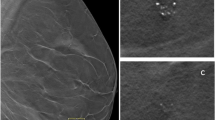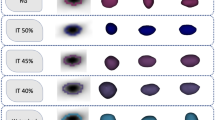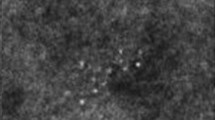Abstract
Purpose
Automated segmentation is required for radiotherapy treatment planning, and multi-atlas methods are frequently used for this purpose. The combination of multiple intermediate results from multi-atlas segmentation into a single segmentation map can be achieved by label fusion. A method that includes expert knowledge in the label fusion phase of multi-atlas-based segmentation was developed. The method was tested by application to prostate segmentation, and the accuracy was compared to standard techniques.
Methods
The selective and iterative method for performance level estimation (SIMPLE) algorithm for label fusion was modified with a weight map given by an expert that indicates the importance of each region in the evaluation of segmentation results. Voxel-based weights specified by an expert when performing the label fusion step in atlas-based segmentation were introduced into the modified SIMPLE algorithm. These weights incorporate expert knowledge on accuracy requirements in different regions of a segmentation. Using this knowledge, segmentation accuracy in regions known to be important can be improved by sacrificing segmentation accuracy in less important regions. Contextual information such as the presence of vulnerable tissue is then used in the segmentation process. This method using weight maps to fine-tune the result of multi-atlas-based segmentation was tested using a set of 146 atlas images consisting of an MR image of the lower abdomen and a prostate segmentation. Each image served as a target in a set of leave-one-out experiments. These experiments were repeated for a weight map derived from the clinical practice in our hospital.
Results
The segmentation accuracy increased 6 % in regions that border vulnerable tissue using expert-specified voxel-based weight maps. This was achieved at the cost of a 4 % decrease in accuracy in less clinically relevant regions.
Conclusion
The inclusion of expert knowledge in a multi-atlas-based segmentation procedure was shown to be feasible for prostate segmentation. This method allows an expert to ensure that automatic segmentation is most accurate in critical regions. This improved local accuracy can increase the practical value of automatic segmentation.






Similar content being viewed by others
References
Aljabar P, Heckemann RA, Hammers A, Hajnal JV, Rueckert D (2009) Multi-atlas based segmentation of brain images: atlas selection and its effect on accuracy. Neuroimage 46(3):726–738
Artaechevarria X, Munoz-Barrutia A, Ortiz-de-Solorzano C (2009) Combination strategies in multi-atlas image segmentation: application to brain MR data. IEEE Trans Med Imaging 28(8):1266–1277
Asman AJ, Landman BA (2012) Formulating spatially varying performance in the statistical fusion framework. IEEE Trans Med Imaging 31(6):1326–1336
Commowick O, Warfield SK (2009) A continuous STAPLE for scalar, vector and tensor images: an application to DTI analysis. IEEE Trans Med Imaging 28(6):838–846
Galvin JM, Ezzell G, Eisbrauch A, Yu C, Butler B, Xiao Y, Rosen I, Rosenman J, Sharpe M, Xing L, Xia P, Lomax T, Low DA, Palta J (2004) Implementing IMRT in clinical practice: a joint document of the American society for therapeutic radiology and oncology and the American association of physicists in medicine. Int J Radiat Oncol Biol Phys 58(5):1616–1634
Heckemann RA, Hajnal JV, Aljabar P, Rueckert D, Hammers A (2006) Automatic anatomical brain MRI segmentation combining label propagation and decision fusion. Neuroimage 33(1):115–126
Isgum I, Staring M, Rutten A, Prokop M, Viergever MA, van Ginneken B (2009) Multi-atlas-based segmentation with local decision fusion–application to cardiac and aortic segmentation in CT scans. IEEE Trans Med Imaging 28(7):1000–1010
Klein S, van der Heide UA, Lips IM, van Vulpen M, Staring M, Pluim JPW (2008) Automatic segmentation of the prostate in 3D MR images by atlas matching using localized mutual information. Med Phys 35(4):1407–1417
Langerak TR, van der Heide UA, Kotte ANTJ, Viergever MA, van Vulpen M, Pluim JPW (2010) Label fusion in atlas-based segmentation using a selective and iterative method for performance level estimation (SIMPLE). IEEE Trans Med Imaging 29(12):2000–2008
Langerak TR, van der Heide UA, Kotte ANTJ, Berendsen FF, Pluim JPW (2011) Label fusion in multi-atlas based segmentation with user-defined local weights. In: Proceedings of the international symposium on biomedical imaging
Martin S, Daanen V, Troccaz J (2008) Atlas-based prostate segmentation using an hybrid registration. Int J Comput Assis Radiol Surg 3(6):485–492
Maurer CR, Qi R, Raghaven V (2003) A linear time algorithm for computing exact euclidean distance transforms of binary images in arbitrary dimensions. IEEE Trans Pattern Anal Mach Intell 25(2):265–270
van Rikxoort EM, Isgum I, Arzhaeva Y, Staring M, Klein S, Viergever MA, Pluim JPW, van Ginneken B (2010) Adaptive local multi-atlas segmentation: application to the heart and the caudate nucleus. Med Image Anal 14(1):39–49
Rohlfing T, Brandt R, Menzel R, Maurer CR (2004) Evaluation of atlas selection strategies for atlas-based image segmentation with application to confocal microscopy images of bee brains. Neuroimage 21(4):1428–1442
Rohlfing T, Brandt R, Menzel R, Russakoff DB (2005) Quo vadis, atlas-based segmentation? In: Suri J, Wilson DL, Laxminarayan S (eds) The handbook of medical image analysis–volume III: registration models, Chapter 11. Kluwer, New York, pp 435–486
Rueckert D, Sonoda LI, Hayes C, Hill DLG, Leach MO, Hawkes DJ (1999) Nonrigid registration using free-form deformations: application to breast MR images. IEEE Trans Med Imaging 18(8):712–721
Villeirs GM, de Meerleer GO (2007) Magnetic resonance imaging (MRI) anatomy of the prostate and application of MRI in radiotherapy planning. Eur J Radiol 63(3):361–368
Warfield SK, Zhou KH, Wells WM (2004) Simultaneous truth and performance level estimation (STAPLE): an algorithm for the validation of image segmentation. IEEE Trans Med Imaging 23(7):903–921
Acknowledgments
This research was funded by the Dutch Cancer Society. All studies have been approved by the appropriate ethics committee and have therefore been performed in accordance with the ethical standards laid down in the 1964 Declaration of Helsinki and its later amendments.
Conflict of Interest
None.
Author information
Authors and Affiliations
Corresponding author
Rights and permissions
About this article
Cite this article
Langerak, T.R., van der Heide, U.A., Kotte, A.N.T.J. et al. Expert-driven label fusion in multi-atlas-based segmentation of the prostate using weighted atlases. Int J CARS 8, 929–936 (2013). https://doi.org/10.1007/s11548-013-0836-4
Received:
Accepted:
Published:
Issue Date:
DOI: https://doi.org/10.1007/s11548-013-0836-4




